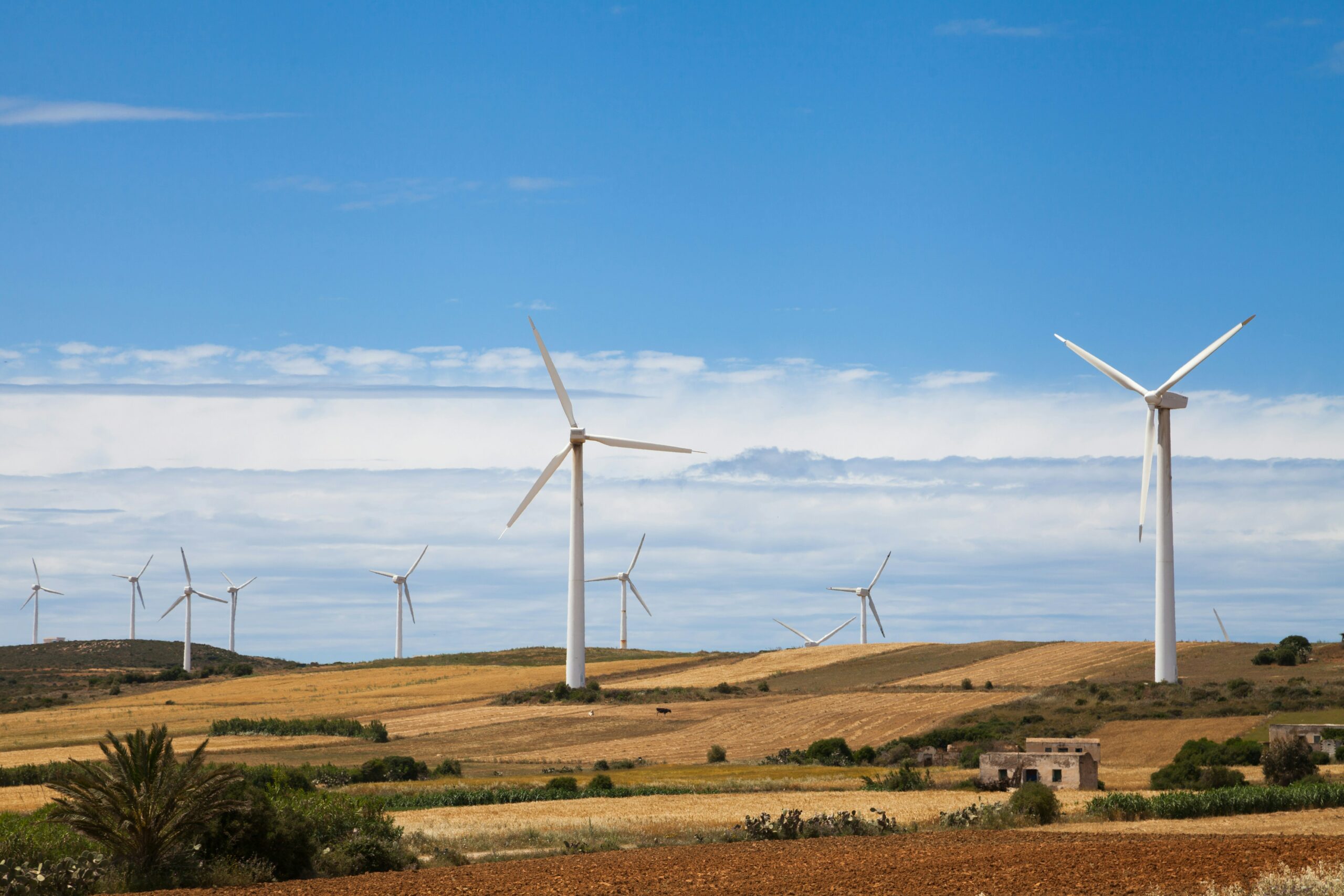Welcome to Climate Tech Pulse, your daily dose of market intelligence helping fuel the fight against climate change. From groundbreaking investments to cutting-edge research, we’re bringing you the latest in climate tech that’s shaping our future.
Don’t miss out on tomorrow’s climate solutions – subscribe now to stay ahead of the curve! https://lnkd.in/dwr7B9XJ
Today’s newsletter:
🔝Today’s Top Story: Berlin-based solar energy company Enpal has reached €5 billion in asset financing commitments, surpassing its initial targets.

📊 Today’s Data Point: Data on global investments in biodiversity.
🌳 Climate Insider Intelligence: Climate Change and Nuclear Power 2024 – a Deep Dive.
Berlin’s Solar Unicorn Enpal Secures €5B to Supercharge Europe’s Renewable Energy Revolution
Image Credit: Enpal
Enpal Surpasses €5 Billion in Financing to Scale Renewable Energy Solutions
Berlin-based solar energy company Enpal has reached €5 billion in asset financing commitments, surpassing its initial targets. This funding will help accelerate the installation of solar panels, heat pumps, EV chargers, and smart meters in private households across Europe. The company now aims to hit €10 billion by 2027, reinforcing its mission to boost renewable energy adoption across the continent.
Transforming Residential Solar with a New Financing Model
Enpal’s success is largely attributed to its innovative financing model. Instead of upfront payments, the company uses Special Purpose Vehicles (SPVs) backed by institutional investors like BlackRock and major banks to fund installations. Homeowners can lease the equipment or finance installations through loans, making it more affordable for families to transition to renewable energy, reduce grid dependency, and achieve energy independence.
Expanding Renewable Energy Access Across Europe
Enpal’s suite of products, from solar panels to EV chargers, is helping over 250,000 households adopt cleaner energy. With these systems in place, the company estimates it will add 3 gigawatts of renewable energy to the grid while saving one million tons of CO2 annually in Germany alone. By scaling its operations and attracting significant investment, Enpal is driving Europe closer to its climate goals. Read More
Market Movers
- Avaana Capital has closed its $135 million Climate and Sustainability Fund to invest in early-stage startups focused on scalable climate solutions in energy, mobility, and sustainable agriculture, supporting India’s net-zero efforts. Read More
- The European Commission has allocated €4.8 billion in grants from its EU Emissions Trading System to support 85 decarbonization technology projects across key greenhouse gas-intensive sectors. Read More
- Hydrogen Mem-Tech has raised €6.3 million, including funding from Peak Sustainability Ventures and AP Ventures, to scale up its hydrogen extraction technology, improve cost efficiency, and explore new markets, including India’s energy transition. Read More
- Cement startup Furno will receive a $20 million Department of Energy grant to build up to eight micro-kilns at a Chicago concrete plant, reducing pollution and transportation costs while supplying local demand. Read More
Tech Spotlight
Quantifying Impacts of Biodegradable Microplastics
Image Credit: Yale University
Source: Center for Industrial Ecology, Yale School of Environment
A new study, published in *Nature Chemical Engineering*, introduces a breakthrough environmental impact assessment method for biodegradable microplastics. Led by researchers from Yale, this method quantifies the climate change and ecotoxicity impacts of these plastics when they degrade in natural environments, providing essential insights for future plastic design and management strategies.
Commercial Viability
Market Impact:
The findings challenge assumptions that bio-based biodegradable plastics are inherently sustainable. Methane release during degradation could drive higher global warming potential than carbon offset by biomass growth, impacting market preferences for eco-friendly plastic alternatives.
Technical Viability
Technology Challenges:
Researchers identified that smaller microplastics may reduce toxicity but contribute to higher greenhouse gas emissions, highlighting a complex tradeoff that challenges current design assumptions.
Environmental Viability
Sustainability Alignment:
The study emphasizes that faster biodegradation isn’t always beneficial, as it may increase emissions. This insight could shift industry focus toward developing plastics that balance degradation rates with lower environmental impact.
Scaling Potential
Investment Strategies:
As the team refines the model for global analysis, this approach could guide investments in sustainable plastic innovation and improve waste management practices worldwide.
Long-Term Implications
Redefining Biodegradability:
This research suggests a need for more nuanced biodegradability standards, potentially leading to the development of plastic materials with reduced overall environmental harm. Read More
Policy Pulse
This section includes global updates on climate change policy, governance and regulation.
Australia starts up Moomba, the world’s third largest CCS project without EOR.
The Moomba carbon capture and storage project in South Australia, a joint venture between Santos and Beach Energy, has become the world’s third largest CCS facility focused solely on storing emissions without enhanced oil recovery (EOR), with the potential to sequester 1.7 million tonnes of CO2 annually.
Why it Matters: This matters because it marks a significant shift toward large-scale carbon storage without relying on oil extraction, advancing global efforts to decarbonize energy systems. Read More
Today’s Climate Data Point
Global investment in biodiversity is lagging behind inflation, with only $208 billion currently allocated annually. According to recent projections, by 2030, $1.15 trillion will be required—an eightfold increase—to meet biodiversity funding needs.
Key Findings:
- Current Funding:
Total biodiversity financing stands at $208 billion, with public finance contributing the majority at $164 billion, an increase of $17.2 billion year-on-year. Key mechanisms include overseas development assistance and debt-for-nature swaps. - Private Investment Decline:
Private sector contributions are shrinking, with nature-based carbon offsets seeing a 53% drop since 2021. Only 7.5% of financial institutions report having executive-level insight into nature-related risks. - Funding Gap:
BloombergNEF estimates a $942 billion shortfall in funding needed by 2030 to meet biodiversity targets established under the Global Biodiversity Framework.
Implications:
- Urgent Need for Action:
Addressing the biodiversity funding gap requires prioritizing high-biodiversity regions, especially in the developing world, with Brazil highlighted as a critical area for investment. - Private Sector Role:
The private sector must increase its contributions through tools such as green bonds, debt-for-nature swaps, and carbon offsets to bridge the gap in the next six years.
Climate Insider Notes:
The slow pace of biodiversity investment puts ecosystems at risk, with a particular need to balance public and private funding to meet 2030 targets. Collaborative financing strategies will be essential for preserving critical biomes, especially in the developing world. Read More
Climate Insider Intelligence: Climate Change and Nuclear Power 2024 – a Deep Dive
Image Credit: IAEA
As the world races against time to combat the climate crisis, the International Atomic Energy Agency’s (IAEA) 2024 report reveals a pivotal shift in energy strategy: nuclear power. This comprehensive analysis delves into how nuclear energy stands as a reliable ally in our quest for a low-carbon future, complementing renewables like solar and wind. With projections showing a potential 150% increase in nuclear capacity by 2050, the report outlines the financial, technical, and policy frameworks essential for this transformation. Read More








